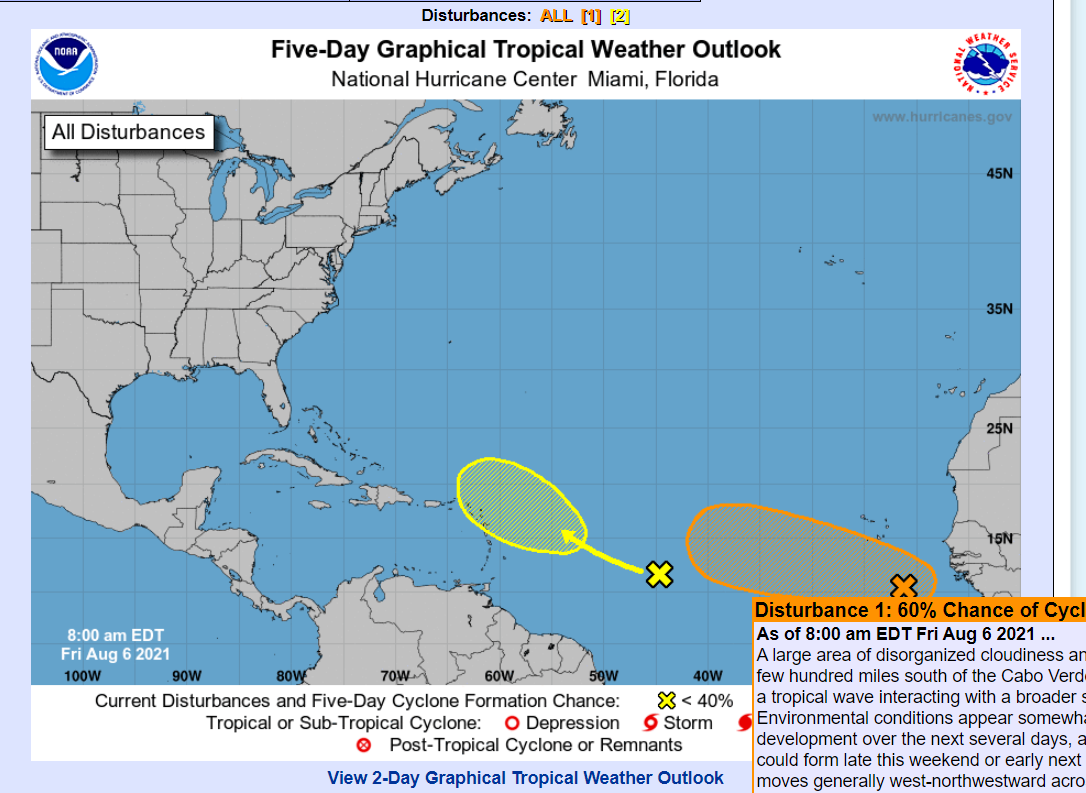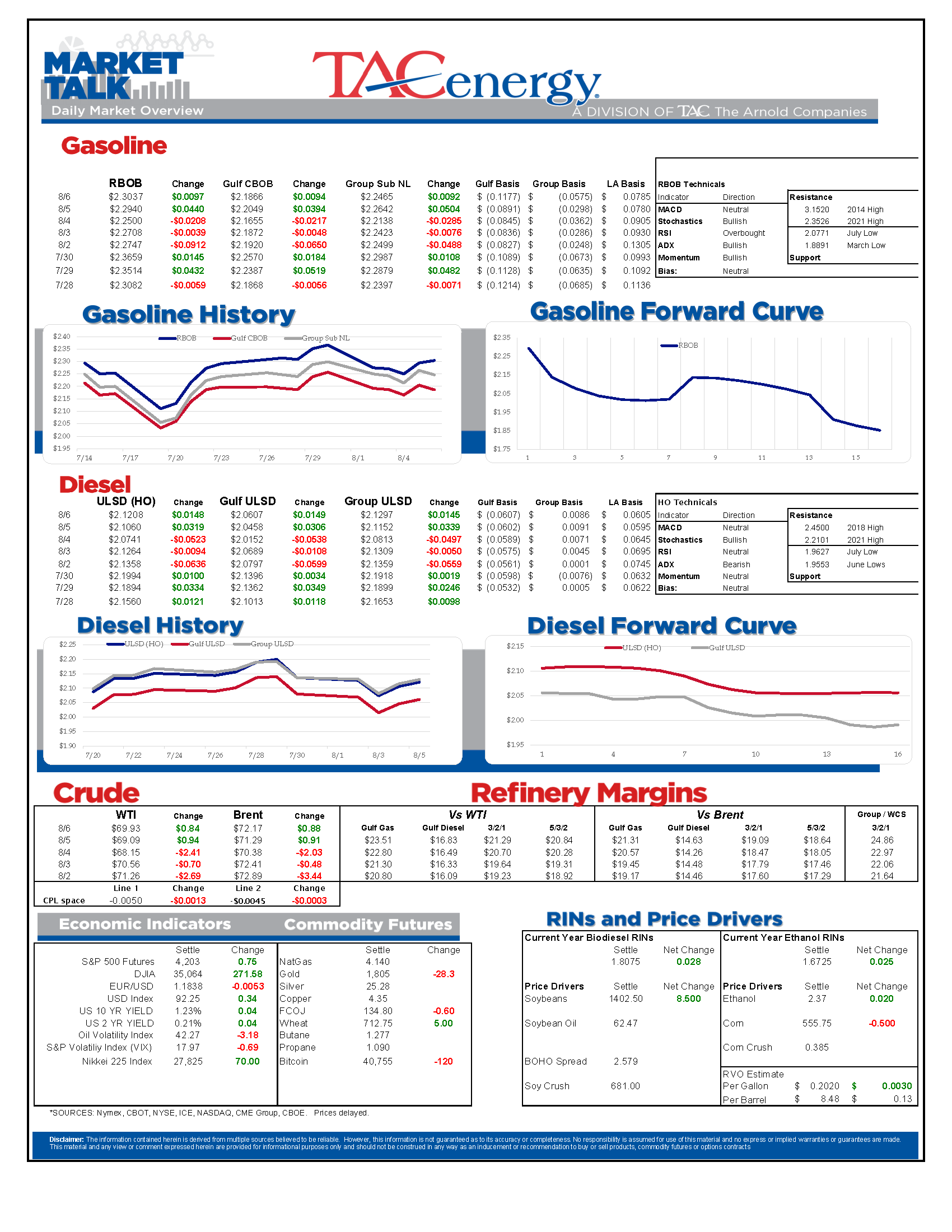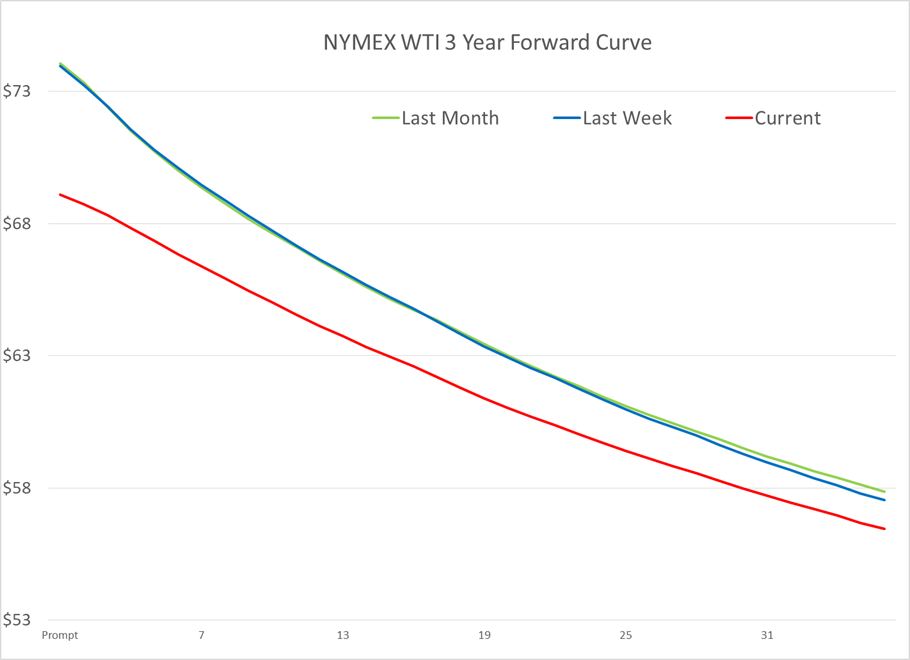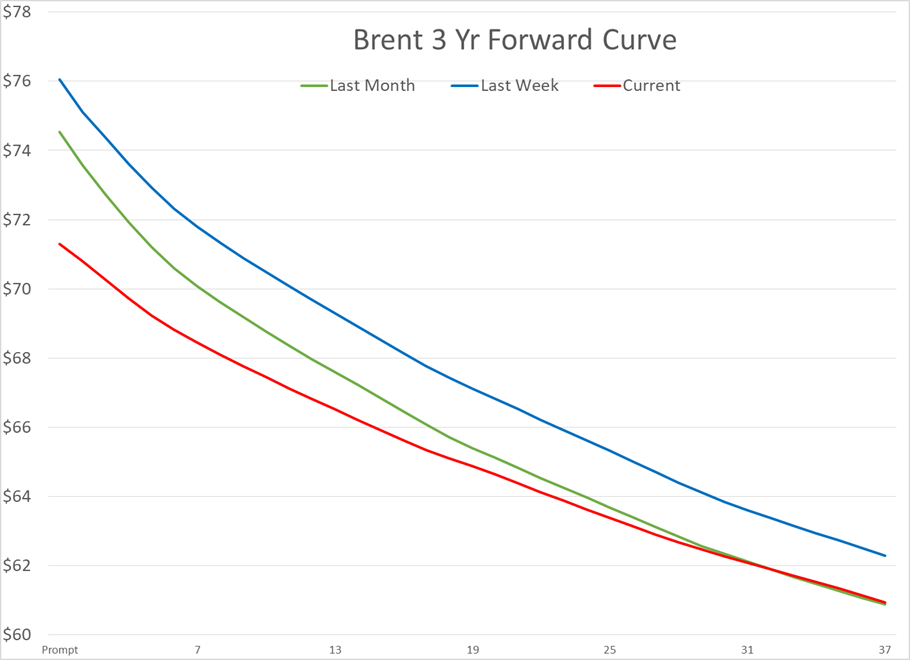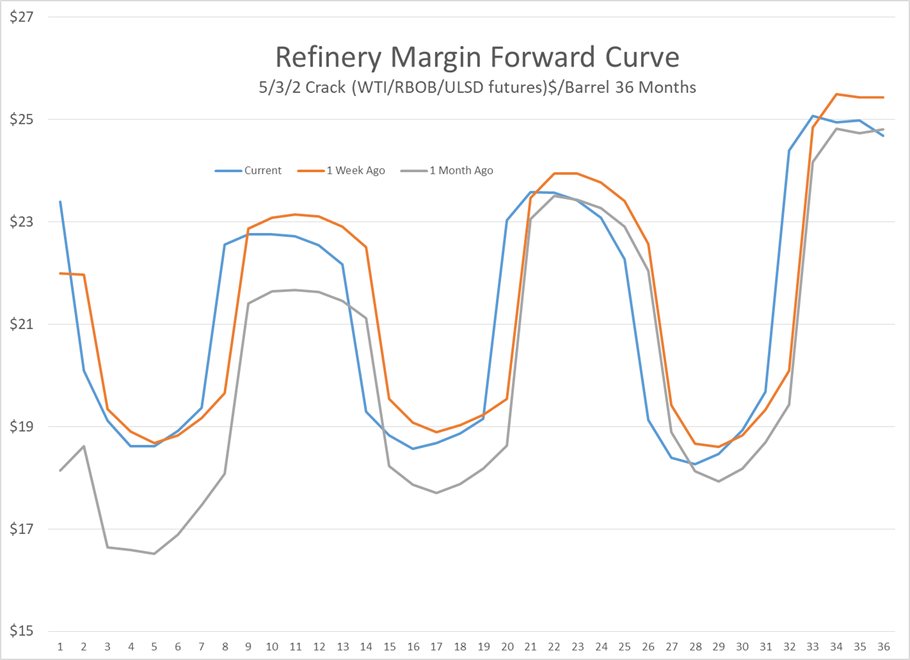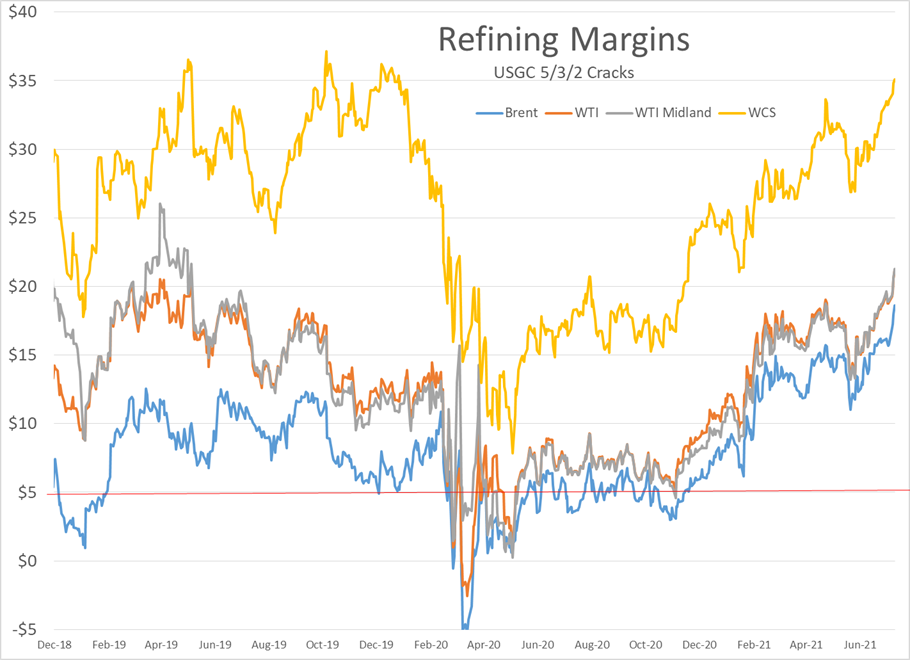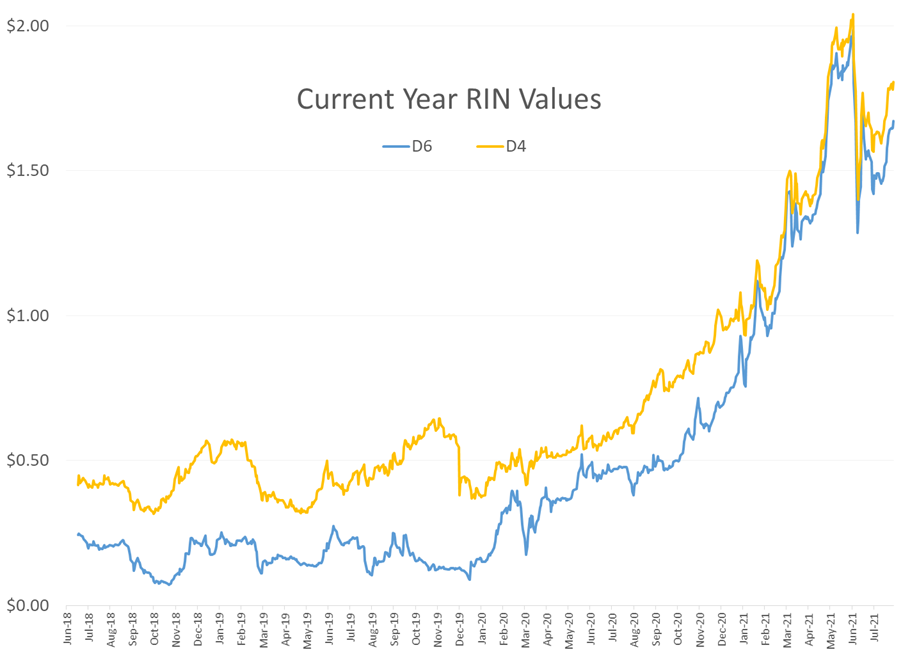Gasoline Prices Recoup Heavy Losses

Gasoline prices have recouped most of the heavy losses suffered in the front half of the week, but need to extend this two day rally to avoid more downward pressure as charts continue to favor lower prices. The September RBOB contract (RBU) continues to be the standout in the entire complex as we begin the early stages of the fall RVP transition, and summer spec products start to become scarce. ULSD and WTI have also seen nice rebounds off of Wednesday’s lows, but are still pointed for large losses on the week and hinting at more to come.
The relative strength in gasoline prices has pushed crack spreads to 2 year highs, providing some much needed relief to the beleaguered refining industry. On the other hand, RIN values are about $1.50/gallon higher than they were 2 years ago, which offsets a large portion of that improvement in the gross refining margins. Perhaps an even bigger concern for refiners is that the traditional driving season is quickly coming to a close, and with so much uncertainty about what the winter will bring with the various COVID variants, these current values may look lofty in the near future.
For a contrary opinion, See this Reuters article on Chinese fuel demand for a good break down of how gasoline consumption remains on pace to hit a record this year despite the recent increases in COVID cases.
The US president signed an executive order on “Strengthening American Leadership in Clean Cars and Trucks” Thursday. In that order the EPA & Transportation secretaries were told to “…consider beginning work on rules” that would push for 50% of new vehicles to be carbon neutral, and to increase the fuel efficiency of traditional vehicles starting with model year 2027. Note the order wasn’t to begin the work, but to consider beginning the work. Based on that, and Washington’s general inefficiency, it seems more likely that the rules will still be debated in 2027 rather than having them adopted.
Perhaps the most notable detail (which naturally is overlooked) is that the President also encouraged the agencies to follow California’s lead in adopting these standards, which could mean the continued spread of the LCFS & Cap & Trade programs.
(c) Given the significant expertise and historical leadership demonstrated by the State of California with respect to establishing emissions standards for light-, medium-, and heavy-duty vehicles, the Administrator of the EPA shall coordinate the agency’s activities pursuant to sections 2 through 4 of this order, as appropriate and consistent with applicable law, with the State of California as well as other States that are leading the way in reducing vehicle emissions, including by adopting California’s standards.
The FERC rejected a request by airlines and cargo plane operators to grant emergency access to Kinder Morgan’s SFPP North line system to get more fuel to Reno, but ordered the parties involved to establish a conference aimed at “resolving current and long-term issues” regarding to that pipeline’s capacity. The order did not require a singing of Kumbaya at the end of the conference.
2 potential storm systems continue to be watched by the NHC, with the 2nd still given 60% odds of developing next week.
Click here to download a PDF of today's TACenergy Market Talk.
News & Views
View All
Energy Futures Are Caught Up In Headline Tug-O-War This Morning
Energy futures are caught up in headline tug-o-war this morning with Canadian oil production concerns and a positive US GDP report trying to push prices higher while sinking Chinese demand worries and Gaza ceasefire hopes are applying downward pressure. The latter two seem to be favored more so far this morning with WTI and Brent crude oil futures down ~45 cents per barrel, while gasoline and diesel prices are down about half a cent and two cents, respectively.
No news is good news? Chicago gasoline prices dropped nearly 30 cents yesterday, despite there not being any update on Exxon’s Joliet refinery after further damage was discovered Wednesday. Its tough to say if traders have realized the supply situation isn’t as bad as originally thought or if this historically volatile market is just being itself (aka ‘Chicago being Chicago’).
The rain isn’t letting up along the Texas Gulf Coast today and is forecasted to carry on through the weekend. While much of the greater Houston area is under flood watch, only two refineries are within the (more serious) flood warning area: Marathon’s Galveston Bay and Valero’s Texas City refineries. However, notification that more work is needed at Phillip’s 66 Borger refinery (up in the panhandle) is the only filing we’ve seen come through the TECQ, so far.
Premiums over the tariff on Colonial’s Line 1 (aka linespace value) returned to zero yesterday, and actually traded in the negatives, after its extended run of positive values atypical of this time of year. Line 1’s counterpart, Line 2, which carries distillates from Houston to Greensboro NC, has traded at a discount so far this year, due to the healthy, if not over-, supply of diesel along the eastern seaboard.
Click here to download a PDF of today's TACenergy Market Talk.

WTI And Brent Crude Oil Futures Are Trading ~$1.50 Per Barrel Lower In Pre-Market Trading
The across-the-board drawdown in national energy stockpiles, as reported by the Department of Energy yesterday, stoked bullish sentiment Wednesday and prompt month gasoline, diesel, and crude oil futures published gains on the day. Those gains are being given back this morning.
The surprise rate cut by the People’s Bank of China is being blamed for the selling we are seeing in energy markets this morning. While the interest rate drop in both short- and medium-term loans won’t likely affect energy prices outright, the concern lies in the overall economic health of the world’s second largest economy and crude oil consumer. Prompt month WTI and Brent crude oil futures are trading ~$1.50 per barrel lower in pre-market trading, gasoline and diesel are following suit, shaving off .0400-.0450 per gallon.
Chicagoland RBOB has maintained its 60-cent premium over New York prices through this morning and shows no sign of coming down any time soon. Quite the opposite in fact: the storm damage, which knocked Exxon Mobil’s Joliet refinery offline on 7/15, seems to be more extensive than initially thought, potentially extending the repair time and pushing back the expected return date.
There are three main refineries that feed the Chicago market, the impact from one of them shutting down abruptly can be seen in the charts derived from aforementioned data published by the DOE. Refinery throughput in PADD 2 dropped 183,000 barrels per day, driving gasoline stockpiles in the area down to a new 5-year seasonal low.
While it seems all is quiet on the Atlantic front (for now), America’s Refineryland is forecasted to receive non-stop rain and thunderstorms for the next four days. While it may not be as dramatic as a hurricane, flooding and power outages can shut down refineries, and cities for that matter, all the same, as we learned from Beryl.

